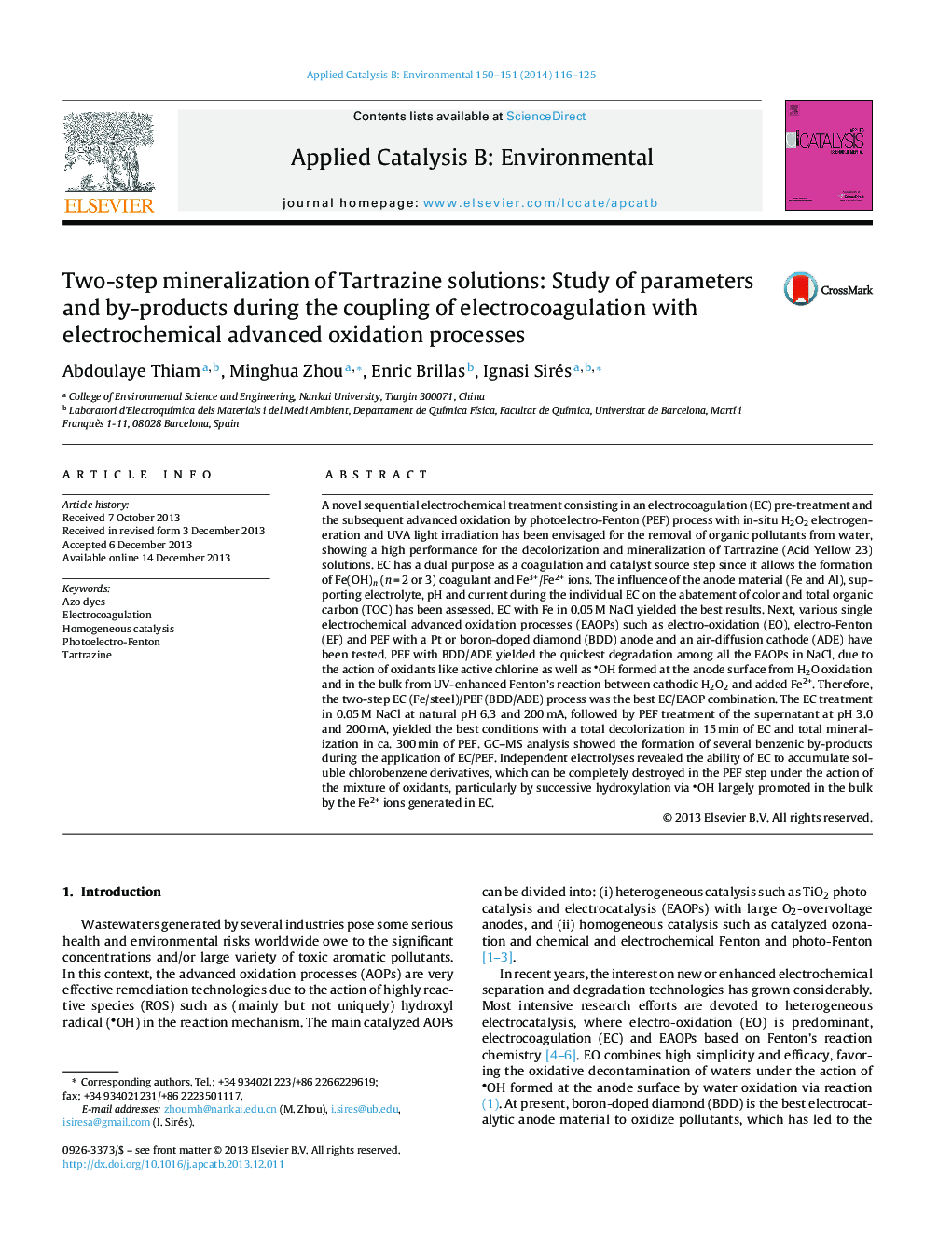| Article ID | Journal | Published Year | Pages | File Type |
|---|---|---|---|---|
| 45916 | Applied Catalysis B: Environmental | 2014 | 10 Pages |
•A novel sequential treatment for water remediation: EC followed by EAOPs.•EC has a dual purpose as a coagulation (with Fe(OH)n) and catalyst source step.•Total decolorization and mineralization of Tartrazine solutions is quick in NaCl.•Synergy between coagulation and oxidation by •OH and active chlorine species.•Reaction paths: non-coagulated chlorobenzenes are destroyed in PEF (BDD/ADE).
A novel sequential electrochemical treatment consisting in an electrocoagulation (EC) pre-treatment and the subsequent advanced oxidation by photoelectro-Fenton (PEF) process with in-situ H2O2 electrogeneration and UVA light irradiation has been envisaged for the removal of organic pollutants from water, showing a high performance for the decolorization and mineralization of Tartrazine (Acid Yellow 23) solutions. EC has a dual purpose as a coagulation and catalyst source step since it allows the formation of Fe(OH)n (n = 2 or 3) coagulant and Fe3+/Fe2+ ions. The influence of the anode material (Fe and Al), supporting electrolyte, pH and current during the individual EC on the abatement of color and total organic carbon (TOC) has been assessed. EC with Fe in 0.05 M NaCl yielded the best results. Next, various single electrochemical advanced oxidation processes (EAOPs) such as electro-oxidation (EO), electro-Fenton (EF) and PEF with a Pt or boron-doped diamond (BDD) anode and an air-diffusion cathode (ADE) have been tested. PEF with BDD/ADE yielded the quickest degradation among all the EAOPs in NaCl, due to the action of oxidants like active chlorine as well as •OH formed at the anode surface from H2O oxidation and in the bulk from UV-enhanced Fenton's reaction between cathodic H2O2 and added Fe2+. Therefore, the two-step EC (Fe/steel)/PEF (BDD/ADE) process was the best EC/EAOP combination. The EC treatment in 0.05 M NaCl at natural pH 6.3 and 200 mA, followed by PEF treatment of the supernatant at pH 3.0 and 200 mA, yielded the best conditions with a total decolorization in 15 min of EC and total mineralization in ca. 300 min of PEF. GC–MS analysis showed the formation of several benzenic by-products during the application of EC/PEF. Independent electrolyses revealed the ability of EC to accumulate soluble chlorobenzene derivatives, which can be completely destroyed in the PEF step under the action of the mixture of oxidants, particularly by successive hydroxylation via •OH largely promoted in the bulk by the Fe2+ ions generated in EC.
Graphical abstractFigure optionsDownload full-size imageDownload as PowerPoint slide
